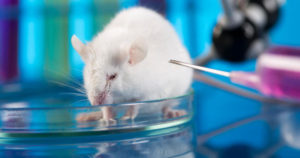
Researchers Successfully Eliminate HIV From An Animal’s Genome
Scientists who were part of the team that eliminated HIV from mice said that their results will play a huge role in efforts to find and create cure of the HIV infection in humans.
Also, this is the first time that HIV has been eliminated from the genome of any living animals.
According to Kamel Khalili, the co-senior author of the study who is also the professor and chair of neuroscience at Temple University in Philadelphia, said, “Our study shows that treatment to suppress HIV replication and gene editing therapy, when given sequentially, can eliminate HIV from cells and organs of infected animals.”
The work was a collaboration with scientists that are from the University of Nebraska Medical Center.
The current treatment that HIV patients get is the Antiretroviral Therapy, also known as ART, which suppresses HIV replication. But the therapy does not eradicate the HIV virus from the host’s body and the therapy is not a cure for HIV.
Humans that are diagnosed with HIV are required to take the Antiretroviral Therapy for their entire life.
In the study that was conducted by the scientists, they used a gene editing system that is called the “CRISPR-Cas9” which was used to remove large fragments of HIV DNA present in the mice, and used a new drug that is called LASER (long-acting slow-effective release) ART.
In the new therapy that was used in the research, the antiretroviral drugs were paced in nanocrystals that traveled in tissues where HIV is likely to be in.
The nanocrystals, which are used in the new therapy, are kept in the cells for a period of time and are released slowly.
The Mice that are infected with HIV were treated with the long-acting slow-effective release Antiretroviral Therapy and then with the gene editing.
This new technique eradicated HIV DNA from nearly one-third of the mice.
But the research that is done on animals sometimes does not produce the same results as humans.
Kamel Khalili, the co-senior author of the study who is also the professor and chair of neuroscience at Temple University in Philadelphia, added, “The big message of this work is that it takes both CRISPR-Cas9 and virus suppression through a method such as LASER ART, administered together, to produce a cure for HIV infection.”
Khalili added, “We now have a clear path to move ahead to trials in nonhuman primates and possibly clinical trials in human patients within the year.”
The results were published in Nature Communications on July 2, 2019.